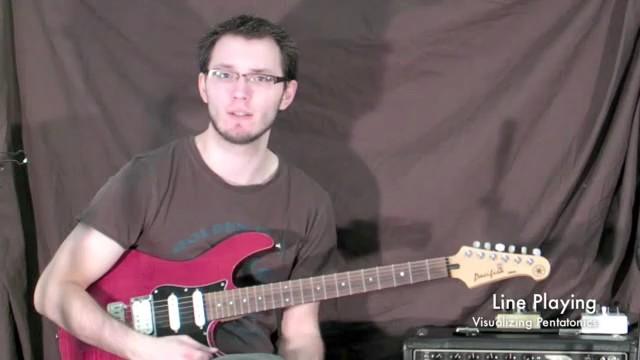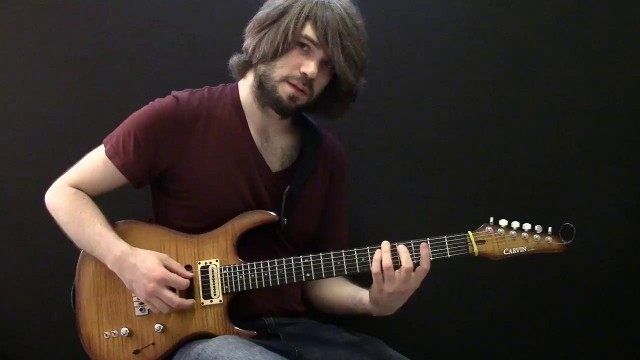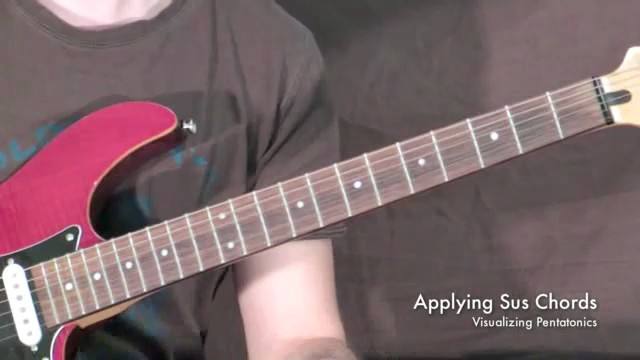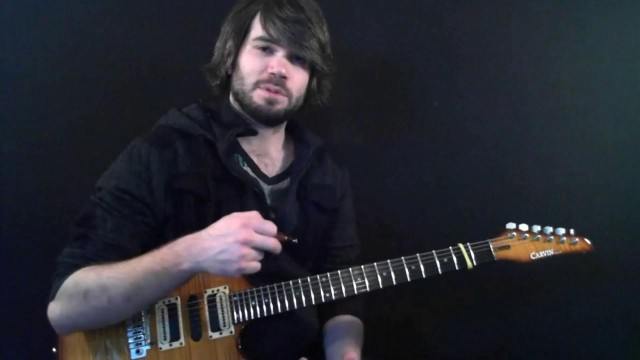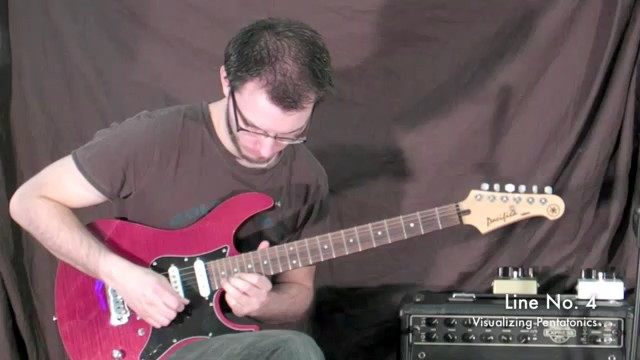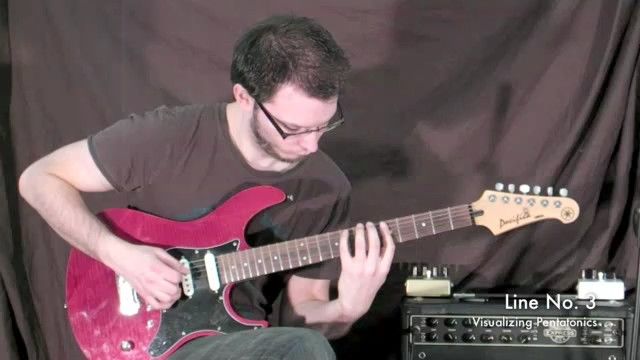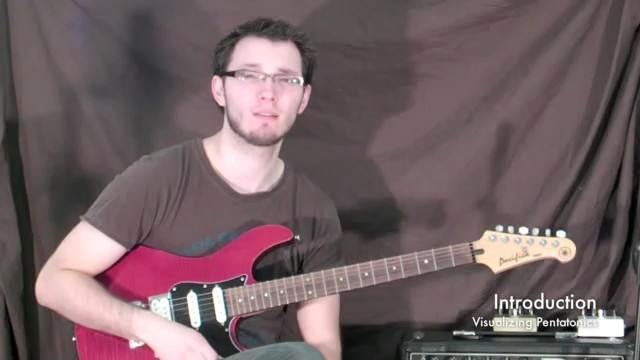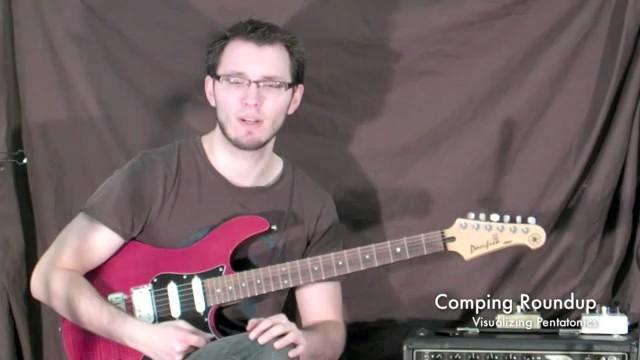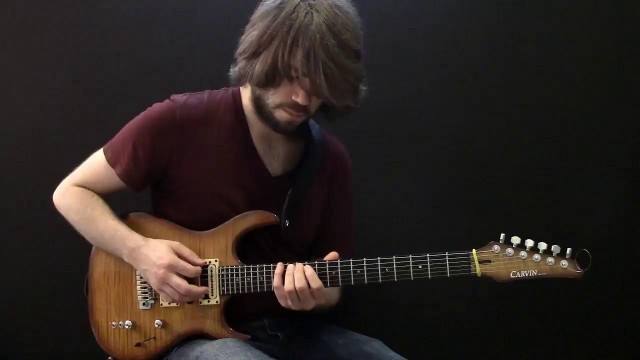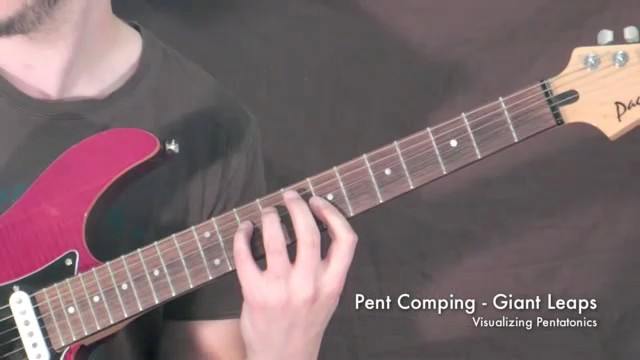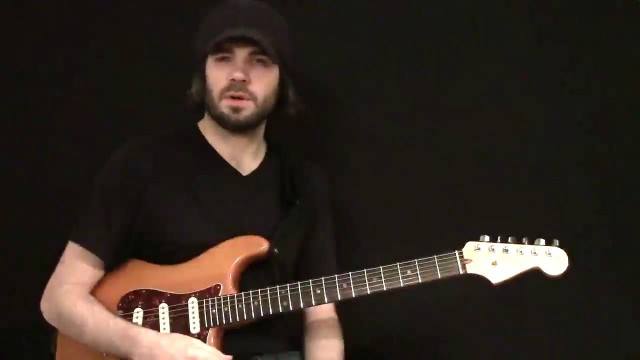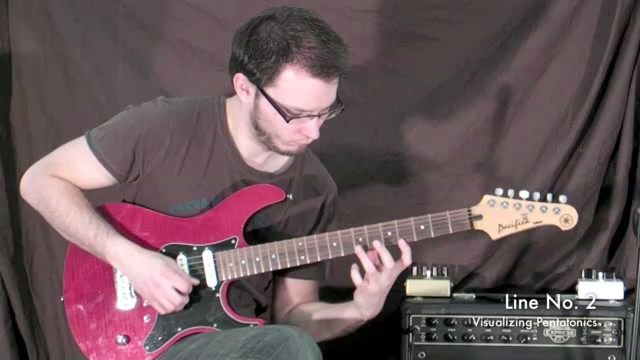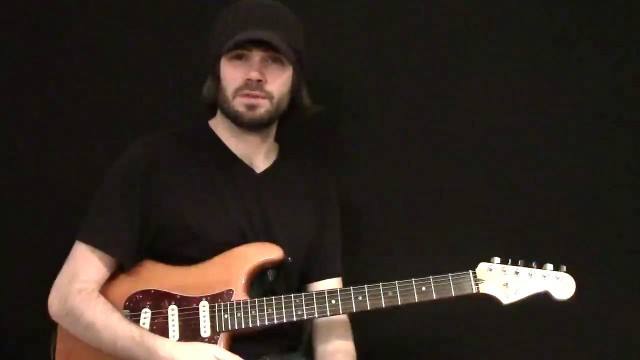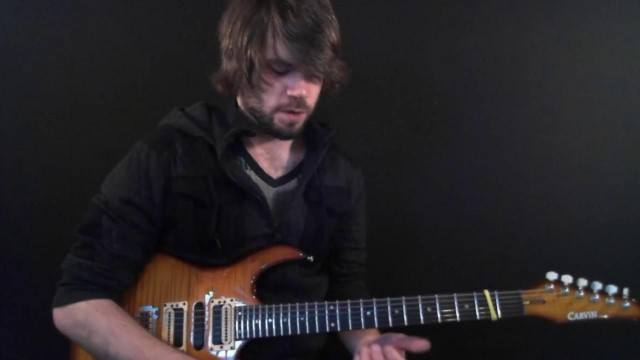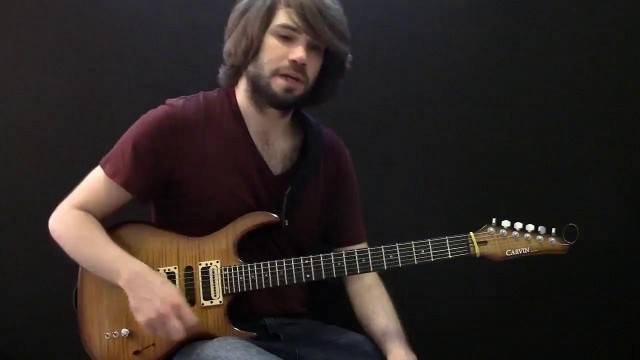One of the best uses I've found for this technique is for comping. In other words, for playing chord based accompaniment or solos over chord changes or a static groove.
Normally you'd rarely think of using a pentatonic scale to comp, but in using this sus4 chord visualization approach we can do so with ease.
The idea here is that we don't always have to play the exact chord written on a lead sheet or chart as long as we're playing something harmonically related to it. We'll assume that the bass player is covering the root, 3rd and 5th in the bass line so we have a bit more freedom.
By using a minor pentatonic which is built from the same key as the chord we're playing over, we can create very modern, 'fusionistic' sounds similar to modern guitar players such as Wayne Krantz, Allan Holdsworth and Kurt Rosenwinkel.
The idea goes as follows: Whatever key you're in, find the minor pentatonic from that key (always built from the 6th degree and often referred to as the relative minor) and use the two relevant sus4 chords and inversions to comp with. We get a very open, modern sound by doing so.
One thing to bear in mind is stylistic context. You wouldn't do this over a pop tune or in a metal song as it's not called for in those particular styles. But for a fusion style or modern jazz style this works really well.
Here's an example: In the video, I play over a groove where the bass player is vamping over a groove in C major. He outlines some chord changes but essentially everything is diatonic to C major. In the key of C major, our minor pentatonic scale is Am. So I'm going to do all my comping using Gsus4 and Asus4 - the sus4 chords built from the b7 and root of the Am pentatonic scale.
I take this to a pretty high level in the final comping video entitled Giant Leaps where I'm doing this on a tune which moves keys every few chords. The sound achieved is very modern and attractive to my ears. See what you think!
To help you guys out with this, I've provided you with a static Am groove to try this on and then the backing track for Giant Leaps. Bear in mind that this approach works best when combined with other approaches such as quartal playing or more standard chord based approaches. Too much of one thing in music gets boring very quickly for you and the listener.
Have fun!
































